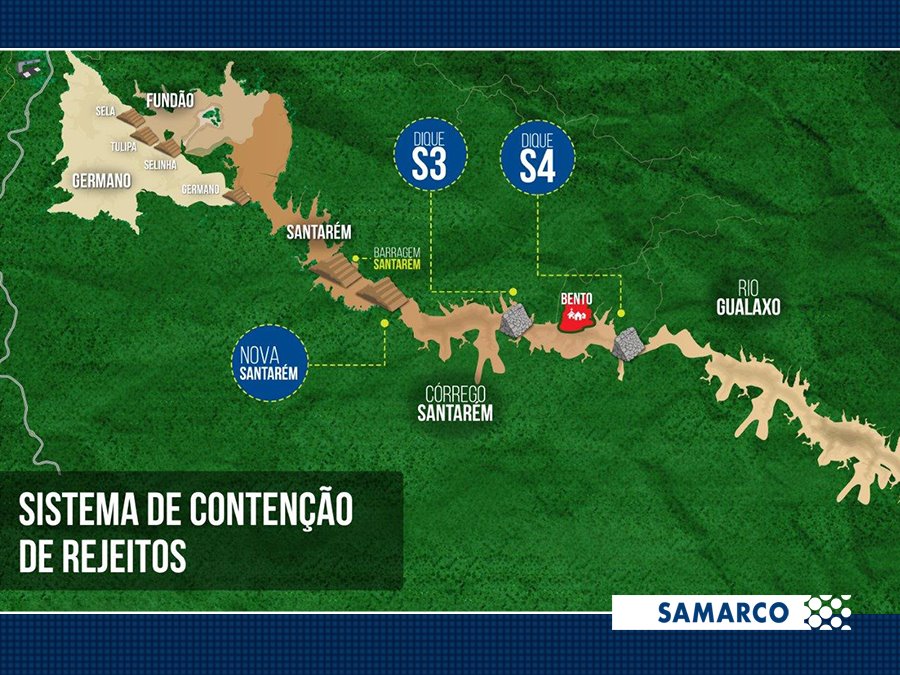17/03/2017

The sediment system increased by approximately six million cubic meters the remaining sediments retention capacity after the Fundão dam burst.
Nova Santarém, concluded in December 2016, was constructed in compacted soil and rock blocs and its function is to prevent sediments from leaving Samarco’s area. The Dike S4 is a temporary structure and will be deactivated as soon as Bentos’ definitive recovery models are defined.
The area to be flooded by the Dike S4 does not affect the existing ruins and buildings, such as the Chapel of St. Benedict and the cemetery and its objective is to prevent any solids from being transported from the impacted area of Bento Rodrigues to the Gualaxo River.
The monitoring of the water in the area indicates, since mid-January, a significant reduction in turbidity levels. The water quality scores, just below the Dike S4, are below the limit of 100 NTUs established by Resolution 357 of the Environmental National Council (CONAMA). Regarding the Dike S4, in February, the average water turbidity level was of 40NTUs. This month, the smallest score was registered on the 13th of May, with a level of 19NTUs.
“The S4 Dike and the Nova Santarém complemented the structures already built in the emergency phase, such as the Dike S3 and the containment barriers. They strengthened and they gave more robustness and security to the sediments containment system built during the year 2016, ” claims Rodrigo Vilela, the infrastructure operations director.
The system is one more step in the environmental repair process. Sediments management actions in the stretch between Bento Rodrigues and the Risoleta Neves Hydroelectric Power Plant (Candonga) are being carried out by the Renova Foundation. At the same time, Samarco is pursuing its dredging work in Candonga.